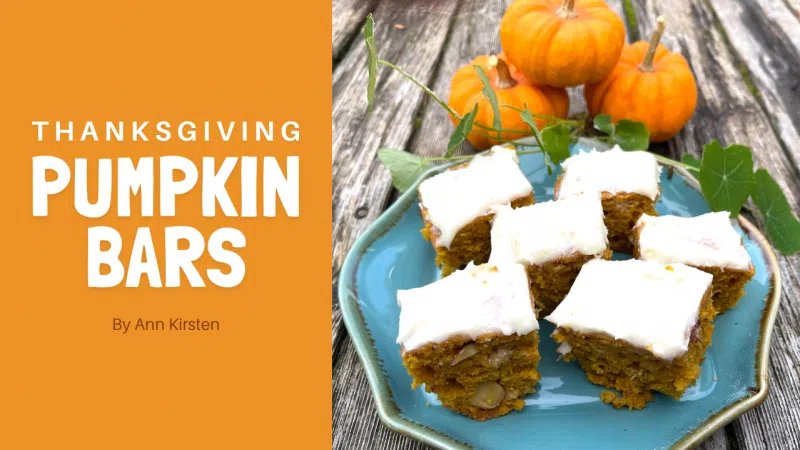Pincushions are often overlooked. Most households have at least one, but they’re relegated to a drawer or hidden away in a sewing room. They are functional, and that’s all we need to know.
Or, is it?
The first documented mention of a pincushion dates all the way back to the Middle Ages. Before that, pins and needles were expensive and were stored in small ivory, bone or silver containers. A friend gave me this wooden needle case many years ago.
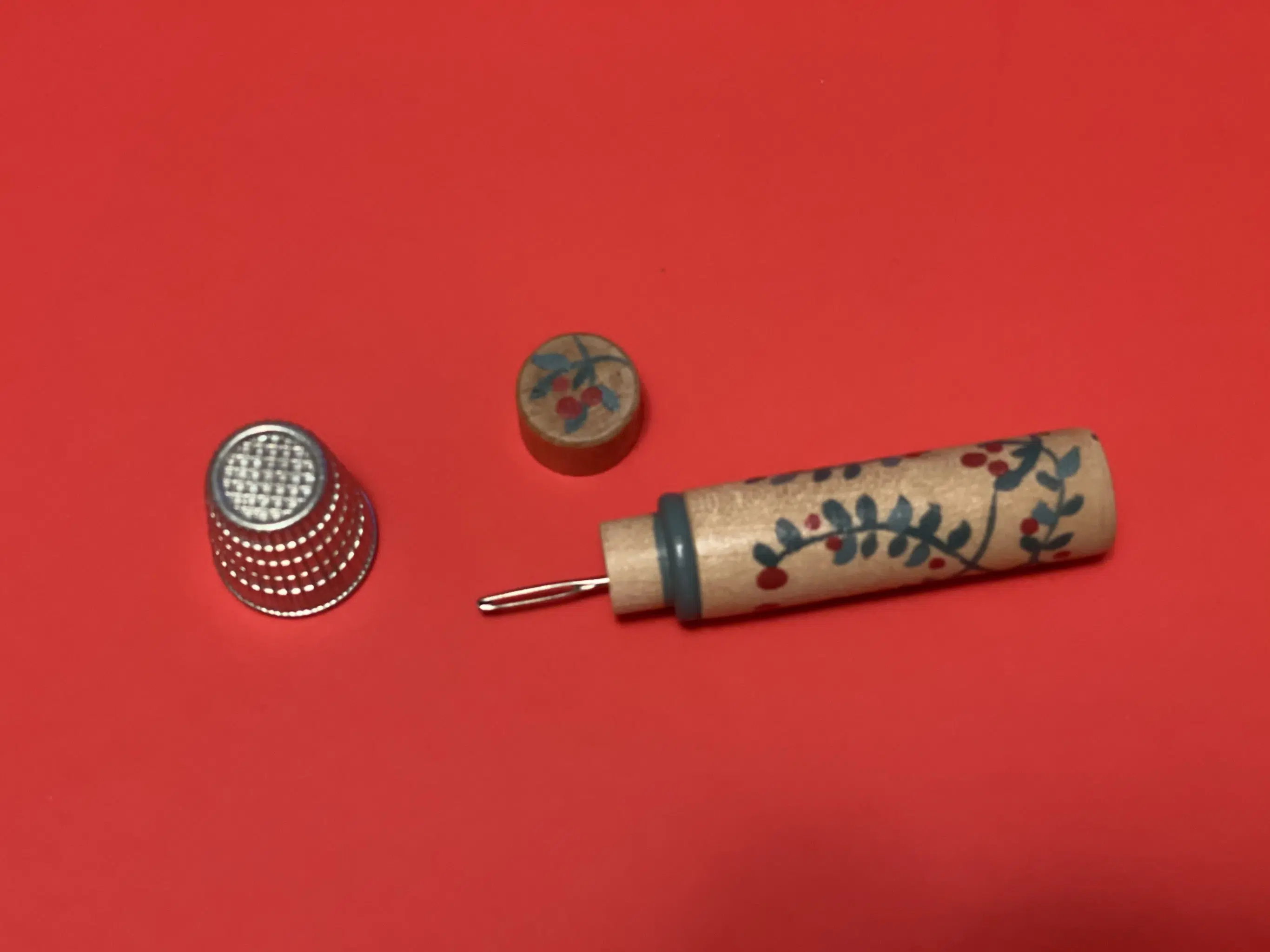
PC: Ann Kirsten
Most of us are familiar with the red tomato-shaped pincushions. According to traditional folklore, putting a ripe tomato on the mantle of a new home ensured prosperity and warded off evil spirits (we know better). The problem with that was that fresh tomatoes weren’t always readily available. So, tomatoes were made from fabric and stuffed with sawdust instead. Women found out that those faux tomatoes were perfect for sticking pins into, and the tomato pincushion was born.
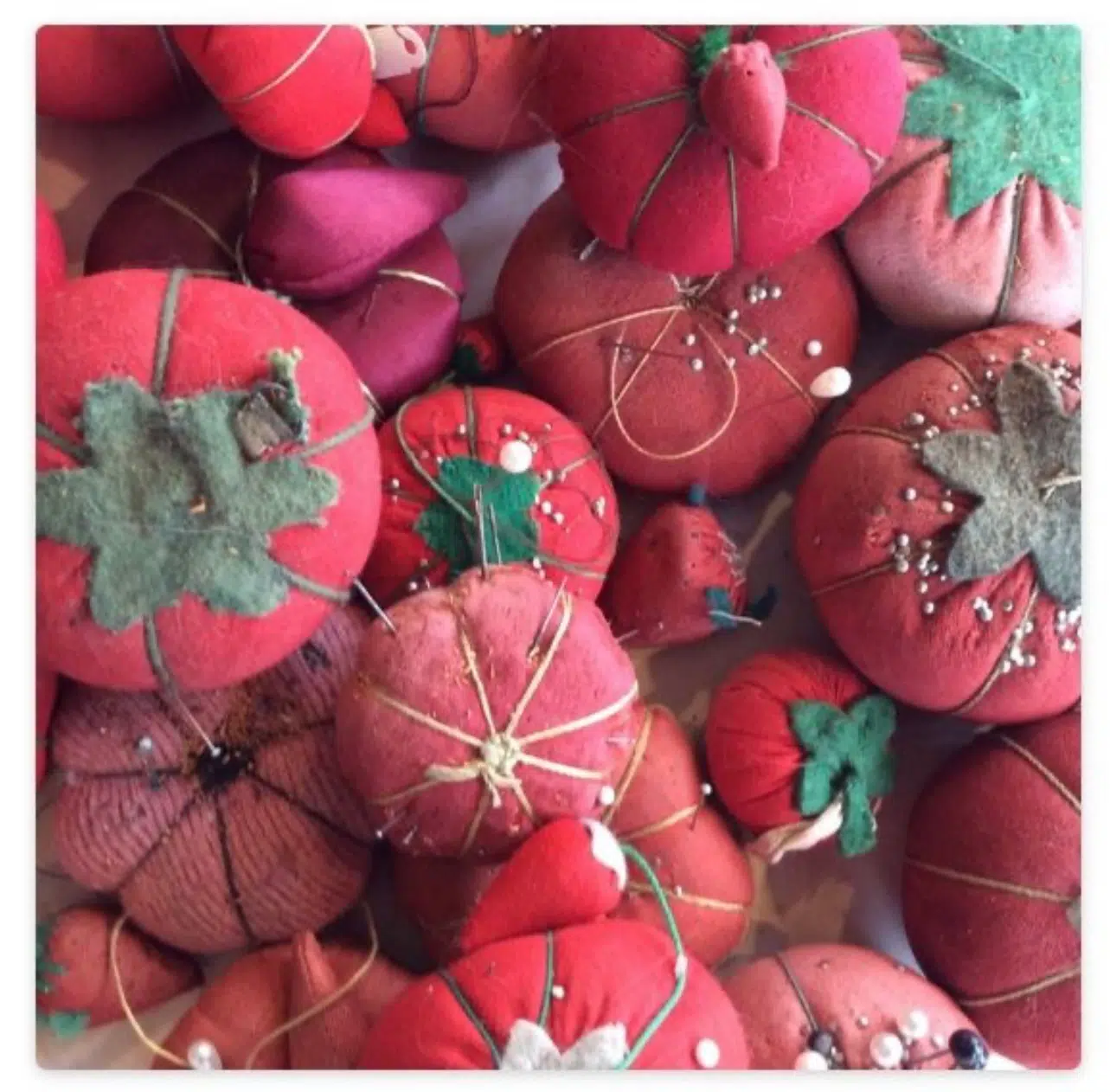
PC: Ann Kirsten
For many years, this rounded shape became the norm. The simple tomato shape has withstood the test of time. Eventually, a little strawberry (filled with emery) was added to sharpen pins and needles.
This is the kind my mom had, and I’ve had my own for over forty years.

PC: Ann Kirsten
You can still easily find the classic red tomato pincushion for a few dollars in any sewing shop. I love to find them in odd colors and patterns. I recently added a hot pink “tomato” to my collection, and I gifted this Pioneer Woman quilted one to my friend for her birthday.

PC: Ann Kirsten
The round shape was classic for many years, as seen on this sampler pincushion dated 1799.

PC: Ann Kirsten
That all changed during the Victorian Era. Back then, well-to-do women would display their large collections of pincushions on shelves in their parlors. The more varied their collection, the more bragging rights the lady had. Doll pincushions were very popular during this time. The tops of their bodies were ceramic, and their skirts were made of fabric and stuffed to be used as pincushions.

PC: magpiesvintageflea
But Victorian pincushions came in all shapes and sizes. Some were handmade with embroidery, and some were fancier and had silver animal shapes or little shoes on the bottom. Having a large and varied collection gave a lady more status and the lowly pincushion had its heyday.
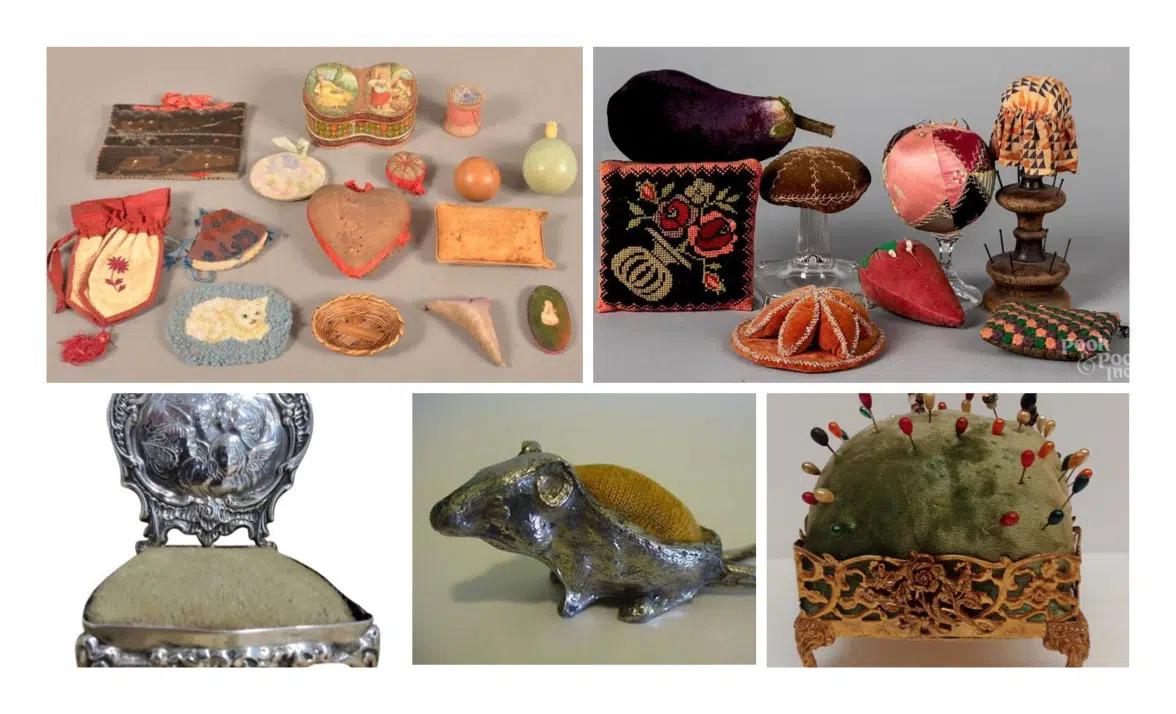
PC: Ann Kirsten
That’s not to say that men didn’t get in on the pincushion craze. Military pincushions were often heart-shaped and sewn by wounded soldiers for their sweethearts or to commemorate fallen comrades. They usually were sewn and beaded with insignias and the colors of their flags. This beauty is for sale on eBay.
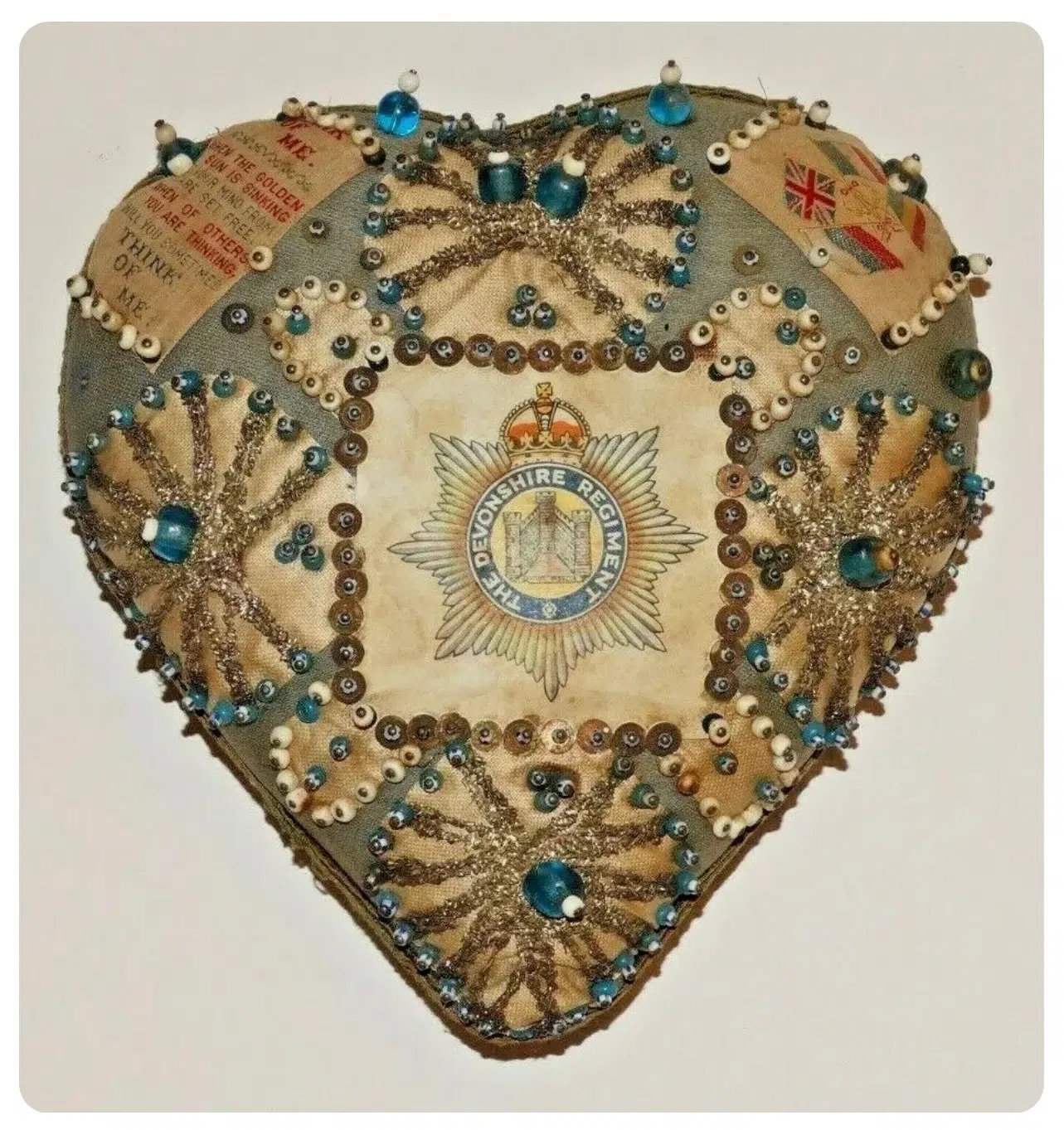
PC: Ebay
Although it is rare to find shelves full of pincushions these days, their simple beauty has earned them respect amongst creative seamstresses who prefer to make their own for their sewing needs. The friends in my Slow Stitch group were kind enough to share their pincushions with you.
Janet not only made this quilted pincushion, she made the pins too!

PC: Ann Kirsten
You can see these other gorgeous examples were made with much love.
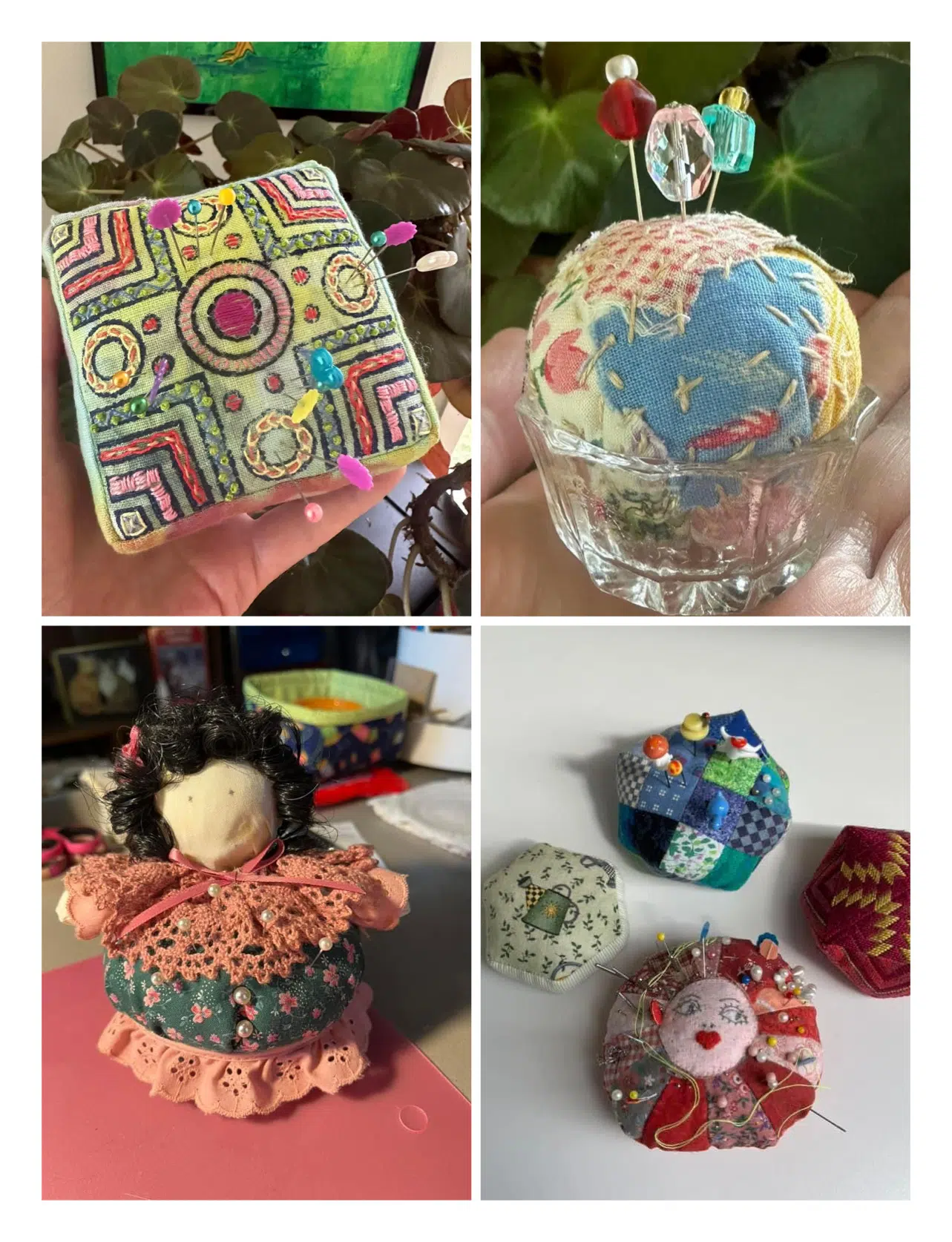
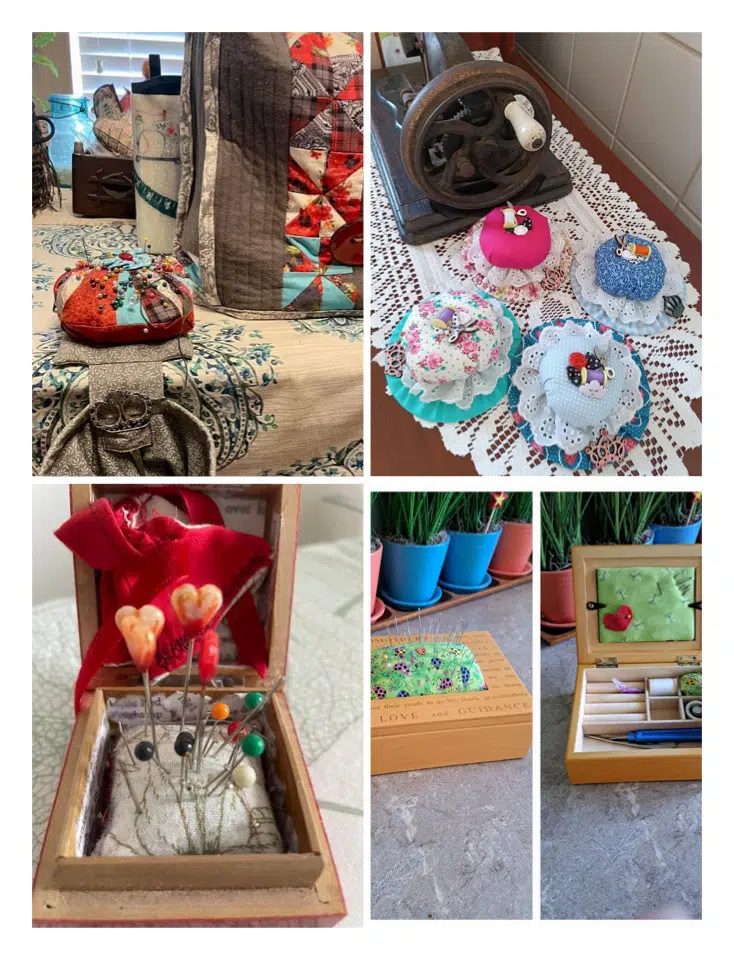
PC: Ann Kirsten
This is not to say that these lovely pincushions sit unused. Joan and Martha made good use of theirs as you can see. Joan’s is hand-felted, and Martha’s was made by her mom with hand-tatted lace.
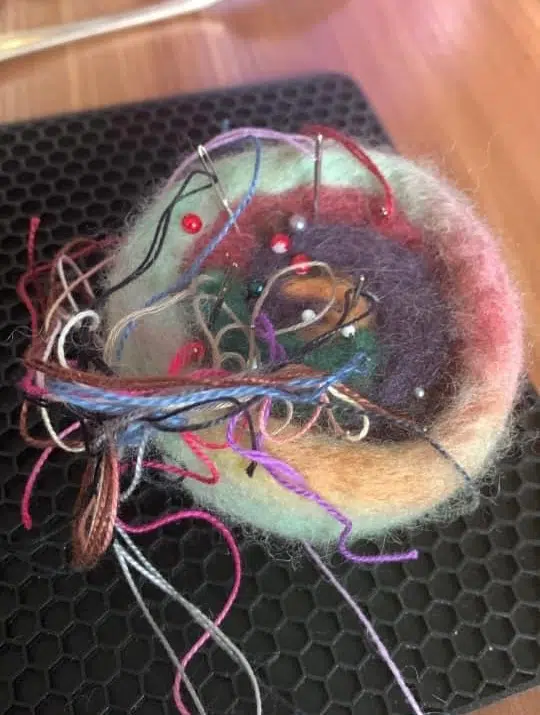
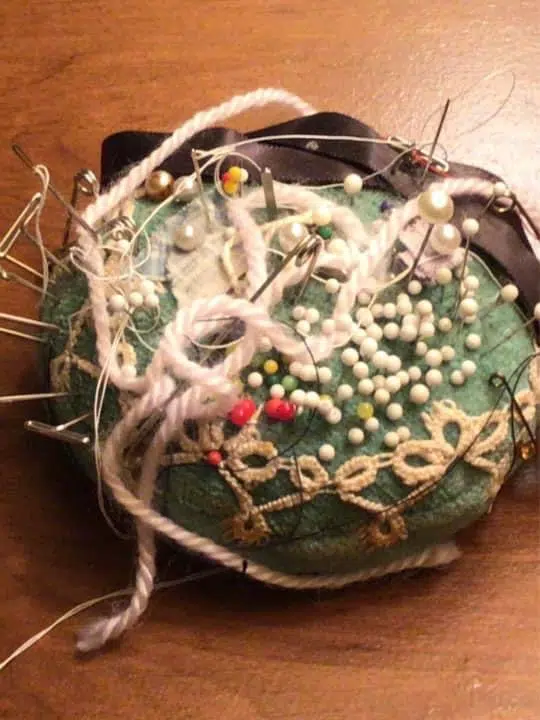
PC: Ann Kirsten
Martha has had this multicolor knit pincushion since childhood. She recently made the pink one herself. They are designed so the center will hold a thimble and the rings can be removed to find lost needles. This style was popular in the 1940’s and 1950’s.
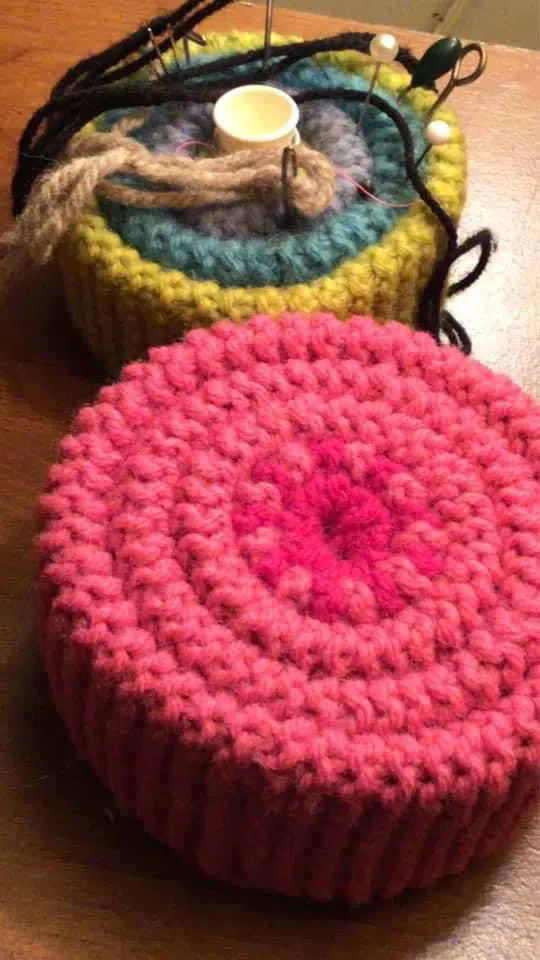
PC: Ann Kirsten
Whether made from raggedy scraps or the finest materials, pincushions elicit a deep reaction from most of us. Even if we don’t sew, they bring back memories of mothers and grandmothers who did. Look at these unique examples (dead fly anyone?).
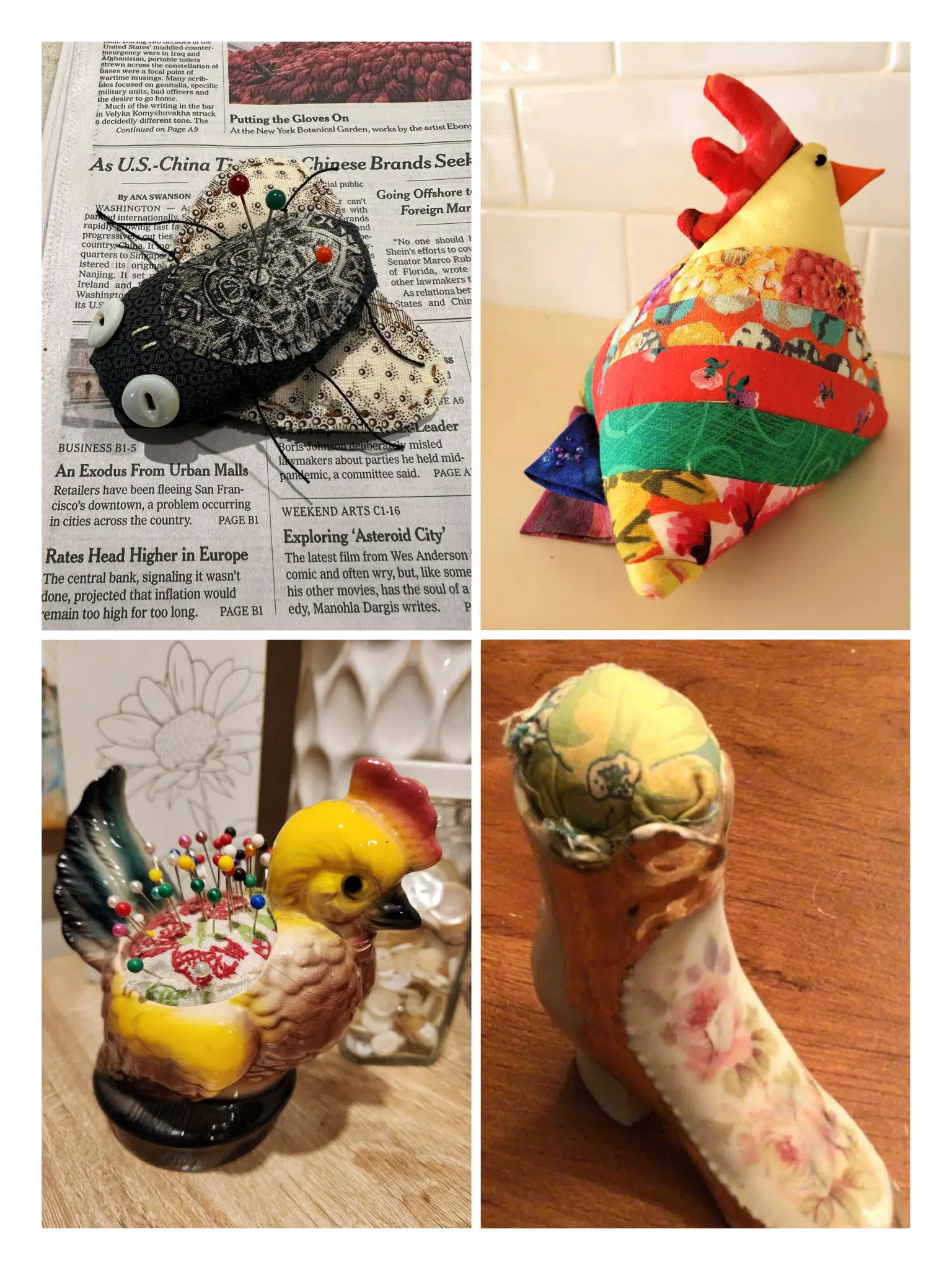
PC: Ann Kirsten
Pincushions are the perfect things to collect. They’re relatively small and the variety of shapes and materials make them fun to hunt for. They can be found anywhere from a few dollars at a yard sale to this wall-hanging Victorian beauty valued at $850.
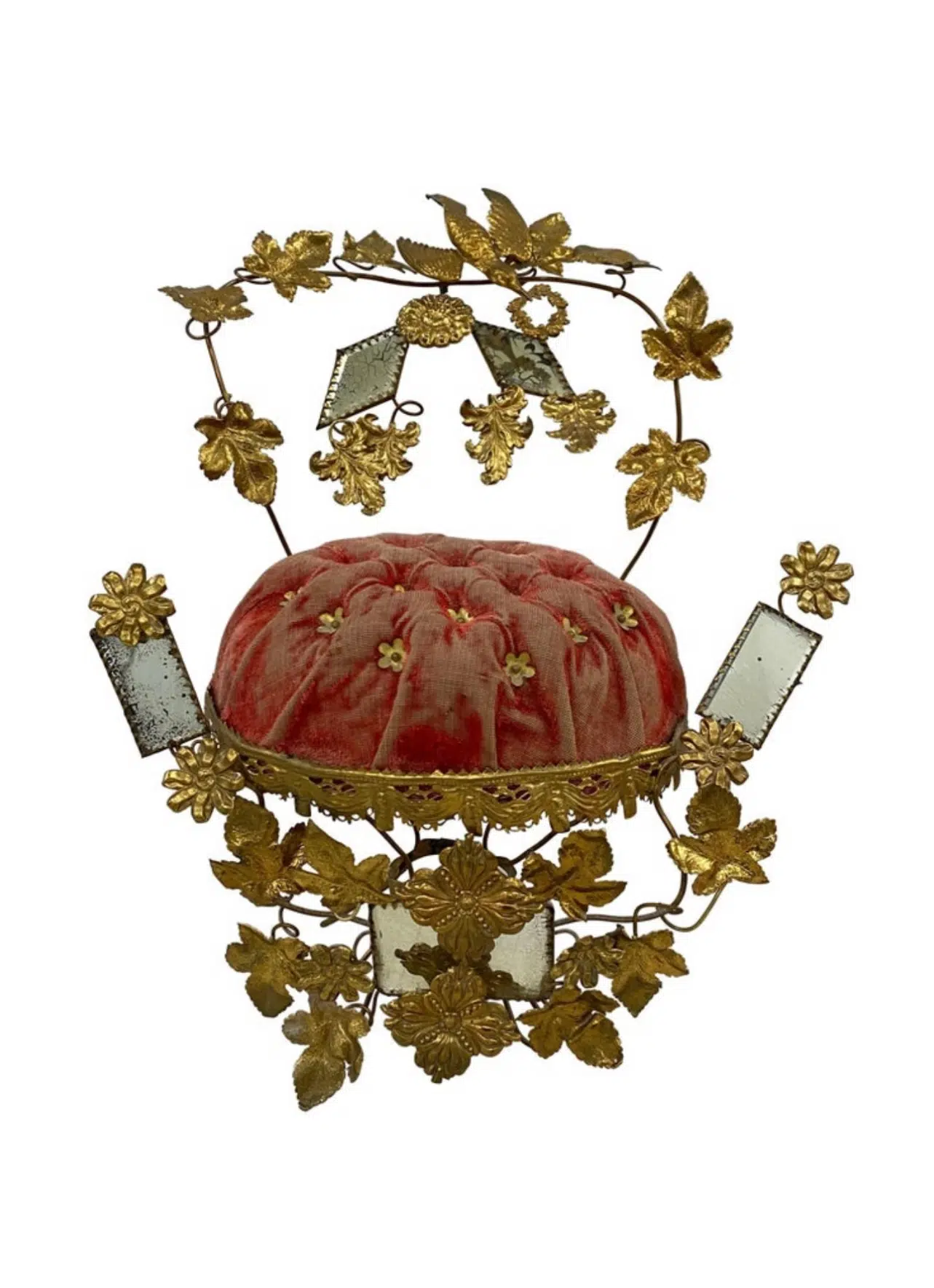
And there you have it, the history of the lowly pincushion. Now, tell us your pincushion story and please share your pictures in the comments. We’d love to see them!
“And though shalt embroider the coat of fine linen, and thou shalt make the mitre of fine linen, and thou shalt make the girdle of needlework.” Exodus 29:39 KJV
PIN THIS!
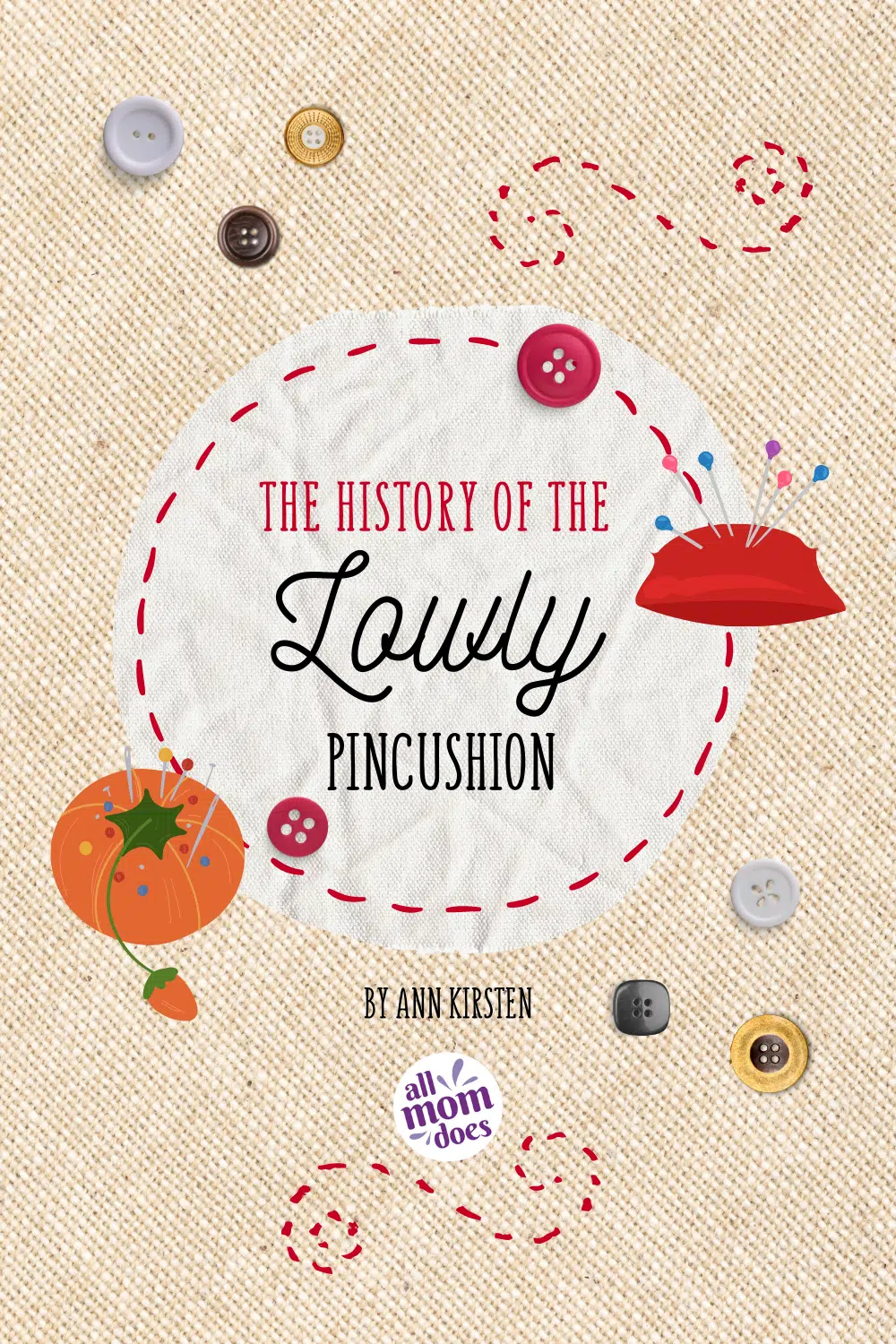
 Read more of Ann’s contributions to allmomdoes here.
Read more of Ann’s contributions to allmomdoes here.









